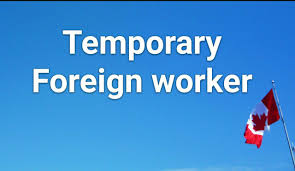Temporary Foreign Worker Program

Temporary Foreign Worker Program
The Temporary Foreign Worker Program (TFWP) helps employers in Canada fill out labour shortages and staff positions where there are no Canadian citizens or permanent residents available. As long as the applicants qualify for the job, The TFWP is a great avenue for employers to hire workers that are either abroad or who are already in Canada. At the present time, the TFWP has expanded its scope to encompass multiple types of applications, which include: high skilled positions, low skilled positions and industry-specific positions such as agriculture workers, applied sciences professionals, academics, amongst others.
Temporary workers who come to Canada under the TFWP are only allowed to stay for determined periods of time. However, there is still the possibility for them to transition to permanent residence. When a worker is able to show that there is a continued demand for their skills, he or she could use any permanent residence routes, such as different federal and provincial immigration programs, to successfully transition to permanent residence. As such, the TFWP continues to be an essential avenue to mitigate labour shortages while providing immigrants with the opportunity to work and potentially immigrate permanently in the future.

Temporary Foreign Worker Program
Normally, there is a two-step process for an applicant to obtain a work permit under the TFWP. The first requires the employer to obtain a Labour Market Impact Assessment (LMIA). After obtaining a positive LMIA, the second step requires the applicant to apply for a work permit supported on the previously obtained LMIA. As mentioned above, because the TFWP exists to fill out labour shortages, the issuance of an LMIA is considered as the formal authorization to allow employers to hire temporary workers. This assessment evaluates the potential employer and determines the effects that hiring foreign workers would have in the local Canadian labour market.
Potential applicants and employers interested in using the TFWP should first determine the type of job offer, the length of the employment, the salary and the position’s industry. With that information in hand, it will become easier to identify which sub stream under the TFWP to use. Currently, the program identifies 2 main branches: general applications and specialized applications.
| Specialized Applications |
| Express Entry, in support of applicant’s permanent residency stream |
| Global Talent Stream, for professionals in selected ICT or STEM jobs |
| Academic stream |
| Agriculture stream |
| Position in Quebec |
| In-home caregivers stream (currently paused) |
| General Applications |
| Low wage stream |
| High wage stream |
Generally, the specialized application category provides expedited process on LMIA and work permit applications. However, for workers and employers who do not qualify under any of the specialized applications, they can still use any stream under the general application process. In addition, the most important consideration for either the low wage or high wage stream is the worker’s proposed salary. If the salary is above the provincial median hourly wage, then the foreign worker must use the high wage stream. If it is below the provincial median hourly wage, then the low wage stream has to be used.
Regards,
SmartImmigrant (Temporary Foreign Worker Program )




